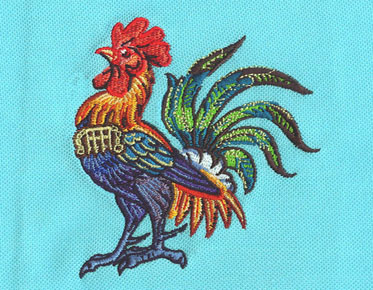Mastering Cap Embroidery Digitizing Techniques
Embroidering designs on caps requires precision
and expertise in embroidery digitizing. With structured and unstructured caps
being the two common types, it is essential to understand the techniques and
considerations specific to cap embroidery. In this article, we will explore the
intricacies of cap embroidery digitizing,
including techniques for structured and unstructured caps, design sizing
guidelines, and the unique 3D puff embroidery method.
Structured Caps: Center Out Technique
1.1 Starting from the Bottom: When digitizing embroidery designs on structured caps,
it is recommended to start the design from the bottom of the cap. This approach
ensures a balanced and visually appealing result.
1.2 Center Out Digitizing: Following the
center out technique, begin digitizing the design from the center and gradually
move towards the left and right parts of the design. This method helps minimize
distortion and maintains the integrity of the embroidered image.
1.3 Dealing with Center Seams: Structured caps often have a center seam that can pose challenges during embroidery. To avoid the thread falling into the seam, digitize a horizontal thread line on the seam and place the design above it. This technique ensures a clean and professional finish.
Unstructured Caps: Flexibility and Adaptability
2.1 Secure Flat Surface: Unstructured caps,
such as five-panel caps, can be secured in the cap frame as a flat surface.
This feature allows for easier embroidery digitization and provides more flexibility in positioning the design.
2.2 Shifting Fabric Considerations: Since
unstructured caps lack the stiff fabric found in structured caps, the fabric
tends to shift more during the embroidery process. Careful attention should be
given to ensuring accurate alignment and stitch placement to achieve optimal
results.
Design Sizing Guidelines for Caps
3.1 Front Design Size: The recommended size
for designs on the front of caps is typically 2.5 inches in height by 5 inches
in width. It is advisable to avoid exceeding the maximum suitable size of 2.75
inches in height by 5.5 inches in width to prevent sewing issues.
3.2 Back Design Size: For the back of caps,
the maximum suitable size is generally 1.5 inches in height by 2.5 inches in
width. When digitizing text in an arch shape, maintain a height of 0.5 inches
and a width of 4.25 inches.
3.3 Side Design Size: Embroidering logos or text on the sides of caps should be limited to a size no larger than 1 inch in height by 2.5 inches in width. Adhering to these guidelines ensures that the designs fit proportionally and maintain the integrity of the cap's shape.
Adding Dimension with 3D Puff Embroidery
4.1 Foam Placement: 3D puff embroidery involves using foam under the embroidery
stitches to create raised designs or letters. Carefully place the foam in the
desired areas to achieve the desired dimensional effect.
4.2 Suitable Foam Material: Select a suitable
foam material that is easy to remove after the stitching process. If the foam
is too strong or stiff, it can be challenging to remove and may potentially
damage the embroidery.
Conclusion:
Mastering cap embroidery digitizing techniques
requires a thorough understanding of the intricacies involved in working with
structured and unstructured caps. By following the center out technique for
structured caps, accommodating the flexibility of unstructured caps, adhering
to design sizing guidelines, and employing 3D puff embroidery when appropriate,
you can create stunning and professional cap designs. With practice and
attention to detail, cap embroidery digitizing opens up endless possibilities
to showcase your creativity on this popular accessory. You can also turn to
Eagle Digitizing for their embroidery digitizing services who provide expert assistance and precision in
translating designs into embroidery files.



